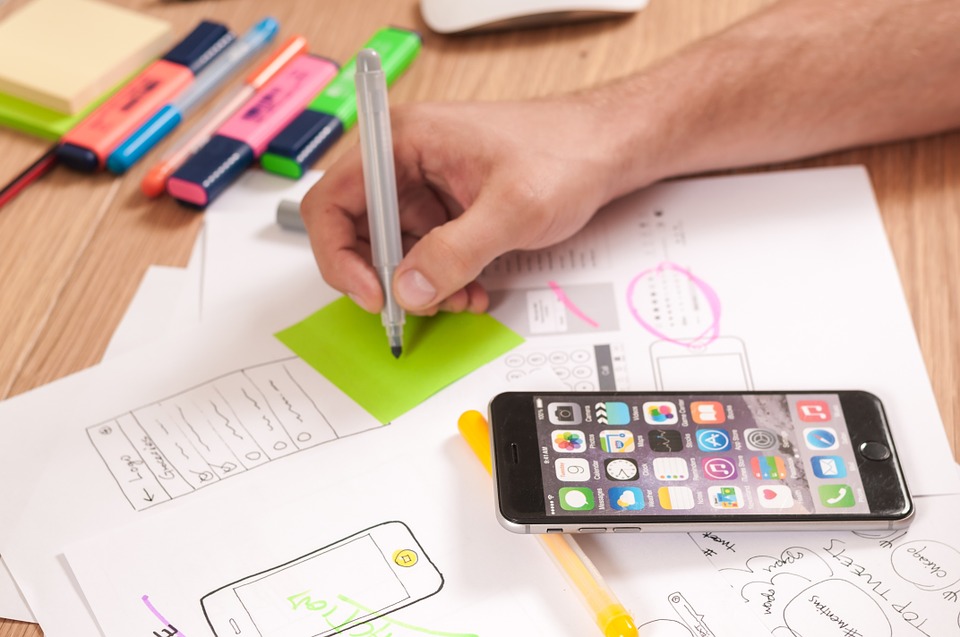In another article we discussed how important iterative design is when bringing the best ideas for a project to fruition.
But the challenge facing many organizations when it comes to planning for iterative design is how to budget for a continuous and variable cost?
In this article, we focus on how to secure budget for iterative design, and how to keep your digital project (and budget) on track.
The current budgetary system
It’s worth taking a minute to expand on how web design projects are usually financed:
- Someone in a business (or a department, say Marketing) decides that the company’s website isn’t good enough anymore, and needs an overhaul.
- This person or department builds a business case for the new website.
- The business case is pitched to executives, and, if approved,
- A budget for the project is determined and approved based on the business case.
This sort of budget process offers a number of benefits: it’s easy to see how much you have to spend, it’s easy to see when the project is going to be completed or go live, and it’s easy to say ‘ok great, we’re done with that now, let’s move onto something else.
However, as we know, this doesn’t always lead to the best results. Things can go wrong that, if not addressed early, end up being costly to fix down the road.
What’s more, we know iterative design can be a much better way to build a high quality digital experience and product compared to traditional development.
The challenge of securing iterative design budget

Which brings us to the challenge.
The challenge of iterative design (and the fear of those signing the cheques) is that, by working in stages, and each stage potentially uncovering new problems, the project can exceed planned timelines and, subsequently, planned budgets.
Basically, the challenge is convincing companies that it’s better to risk having a finished product that works than the safety of simply having a product.
However, this risk isn’t supported in evidence. Traditional design and development approach is considerably more risky than iterative design for all the reasons we outlined in this article on iterative design.
To recap:
- Testing mostly happens at the end of the project
- Small problems are potentially identified very late, when they’ve become major ones
- Everything is intertwined – if the project runs late during one phase, the whole project is at risk
- Requirements are identified up front, when there is less understanding.
As a result, the first step in securing budget for iterative projects is usually education.
Iterative design is, at first glance, a Project Manager’s worst nightmare – a project with lots of moving parts and no clear end date, where deliverables and completed piecemeal? Hard pass.
However, that’s not the reality of iterative design; rather, it’s about solving problems early so they are quick (and cheap) to fix. Its about distributing project risk across multiple teams, and about relying on specialists to do a great job.
The result can be a better product, for less money, that’s more likely to be completed on time.
The only question left is: how do you stick to a budget?
Sticking to a budget
When the only limitation to your iterations is how much money you have, sticking to a budget can be… difficult.
Here are the golden rules we use to keep projects on budget
Learn to satisfice.
This is the dirty little secret of all successful design.
Within each project, there’s always a moment when something could be better. But while we can always strive for perfection, we do run into the problem that perfection is sometimes not worth it.
Sometimes, the goal should be a design that is good enough to be fit for purpose. Don’t forget: there can always be a version x.1 in a few months’ time.
Set limits.
Set limits on your iterations. The benefits of iterative design are that it provides the opportunity for testing as you go. The benefit is not the ability to test one small feature a thousand times.
Save money on usability testing.
There are many different types of usability testing, but for most iterations we recommend simple tactics such as guerrilla, paper prototypes, or online remote testing. These will give you the insights you need.
Prototype with code you can use (or use a third-party SaaS company).
The most common objection to prototype testing is that it creates poor quality code. Either plan on using all the code you prototype with, or alternatively use one of the many third-party SaaS companies offering prototype software now. It will save you a lot of pain down the line.
Hit your milestones.
The biggest risk for any website or app development project is that milestones will be missed and the project will exceed its timelines, resulting in higher costs.
Include contingency weeks in your upfront plan, anticipate delays, and establish firm project milestones. It will give you something to work towards as well as keep you on time, which in turn keeps you on budget.
Conclusion
Budgeting for iterative design seems like a scary process.
For starters, the ask for budget at the start seems harder, and secondly, because the lack of a linear project plan makes it intimidating to budget for.
But with adequate education and comprehension, iterative design can be used to secure the budget you need to create amazing digital products.
And with careful attention to detail and a constant focus on where you want to go and what you want to achieve (plus working with specialists you trust), you can manage your project to sail smoothly along to your launch day.
